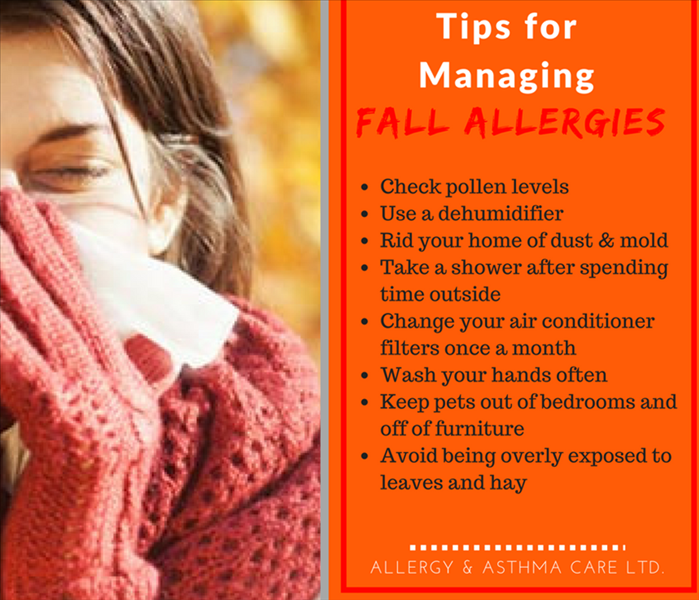Fall Weather can Trigger Allergies
9/25/2019 (Permalink)
When many people think of allergies, they think of springtime, but fall can be just as troublesome as the spring months. Here’s why as the days get shorter, your runny nose, itchy eyes and scratchy throat might worsen.
- Ragweed pollinates in the fall. The most common fall allergy is ragweed, a soft-stemmed weed that produces vast amounts of pollen – about a million grains per plant every day! These grains of pollen are so lightweight they can travel up to 400 miles on the wind. Ragweed pollinates from mid-August to October, depending on where you live. According to the Asthma and Allergy Foundation, an estimated 10-20% of Americans suffer from ragweed allergies.
- Mold spores are released in the fall. If you are allergic to the spores of mold or other fungi, you likely experience symptoms in the fall. Molds can be found wherever there is moist, organic material. Outdoors, they grow on plants, rotting logs and decaying leaves. Mold spores are released in the fall and spread through the air as crops are harvested and leaves fall to the ground.
- Unpredictable weather extends fall allergy seasons. Warm, dry weather that lasts longer than usual in the fall months allows ragweed pollen to linger and continue to cause symptoms. In areas that experience a wetter-than-normal fall, mold spores can circulate later into the season.
- Dry indoor air triggers allergy symptoms. As the temperature cools outside, people fire up their heating systems, leading to drier indoor air and increased circulation of dust and pollen. Low humidity inside a home can dry out people out and cause inflammation, triggering allergy symptoms. To prevent problems caused by dry air, aim for an indoor humidity level of 40-50%; use a hygrometer to monitor humidity levels.






 24/7 Emergency Service
24/7 Emergency Service
